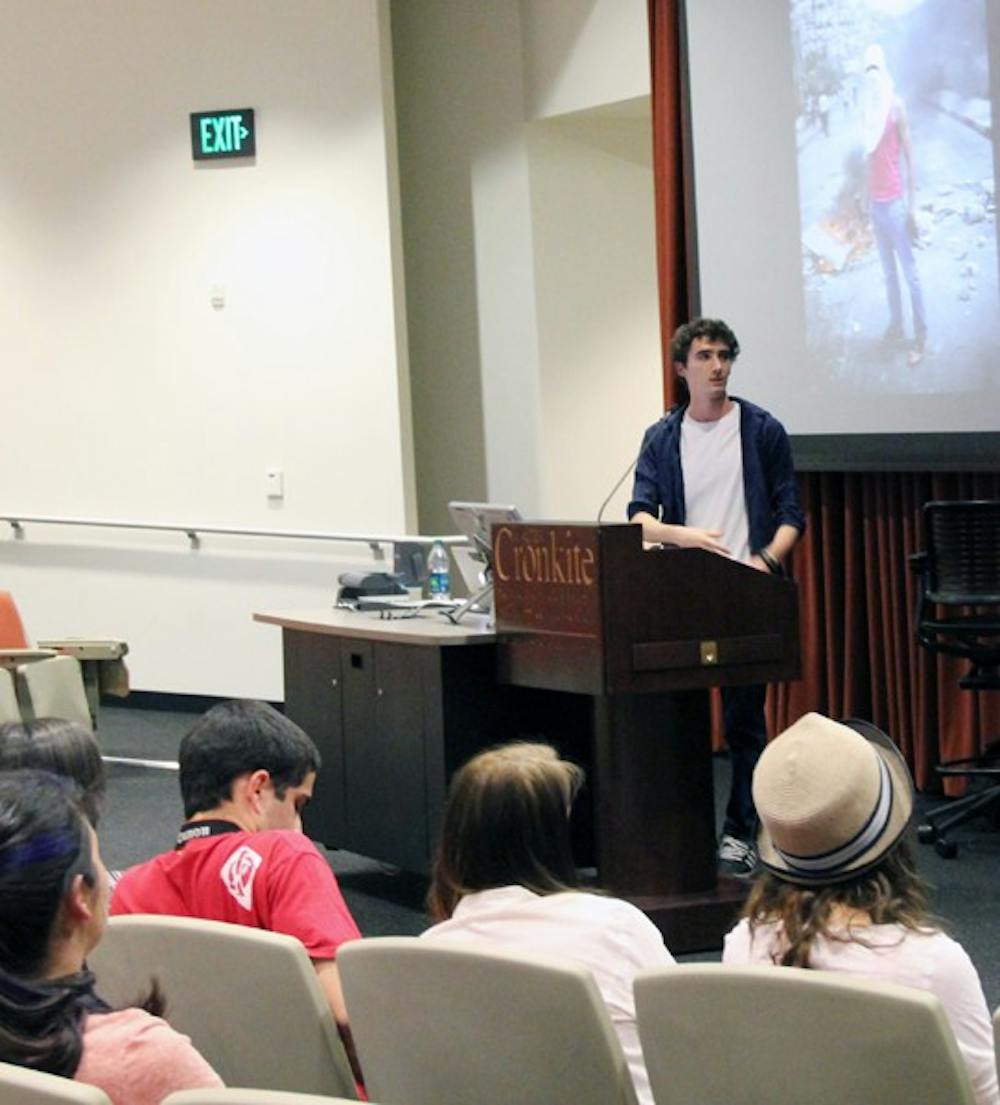Photograph after photograph flashed across the screen, portraying scenes of havoc.
A cloud of tear gas fills the air. Rocks are launched from the bed of a slingshot as stun grenades explode. Children are in the midst of it all, their heads covered in long white drapes. These are the riots that Photojournalist Ruben Salvadori has seen up close and personal in the streets of Israel.
Salvadori began exploring the riots of the Israeli-Palestinian conflict after growing up in Venice and studying anthropology and sociology at the Hebrew University of Jerusalem.
After seeing these events in person, he said the reality of the conflict can seem very different in a photo.
“The seek for drama sometimes pushes photographers to look for drama when there isn’t drama there at all,” Salvadori said during his presentation, sponsored by the National Press Photographer Association and Sun Devils for Israel on the Downtown campus.
He said the never-ending thirst for drama has pushed photographers to the point of trying to create fever in their photographs.
Bias can be seen in each photographer’s work, especially in the case of the Israeli-Palestinian conflict, Salvadori said.
Kinesiology senior Samantha Rush, a Sun Devils for Israel member, said what Salvadori is trying to portray through his work is significant.
“It’s important to make sure that the public and media sources make sure that what they’re viewing and reporting on is in context,” Rush said.
Journalism senior Duyen P. Tran said Salvadori’s photographs challenge the audience to look beyond what the media may be trying to portray.
“He wants us to have our own opinion through the photography,” Tran said.
When the photographer snaps each photograph, it can become more of a scripted scene than a naturally occurring moment, Salvadori said.
“The public needs to be active when looking at a photograph,” he said. “They think whatever they see in the news or on television is absolute truth and reality.”
Salvadori said the public has become overwhelmed with so many images of different viewpoints that it affects the way people form opinions.
“People really need to be curious when looking at a photograph, seeing what meaning is beyond it,” he said.
Reach the reporter at hayli.metter@asu.edu.
Click here to subscribe to the daily State Press newsletter.





